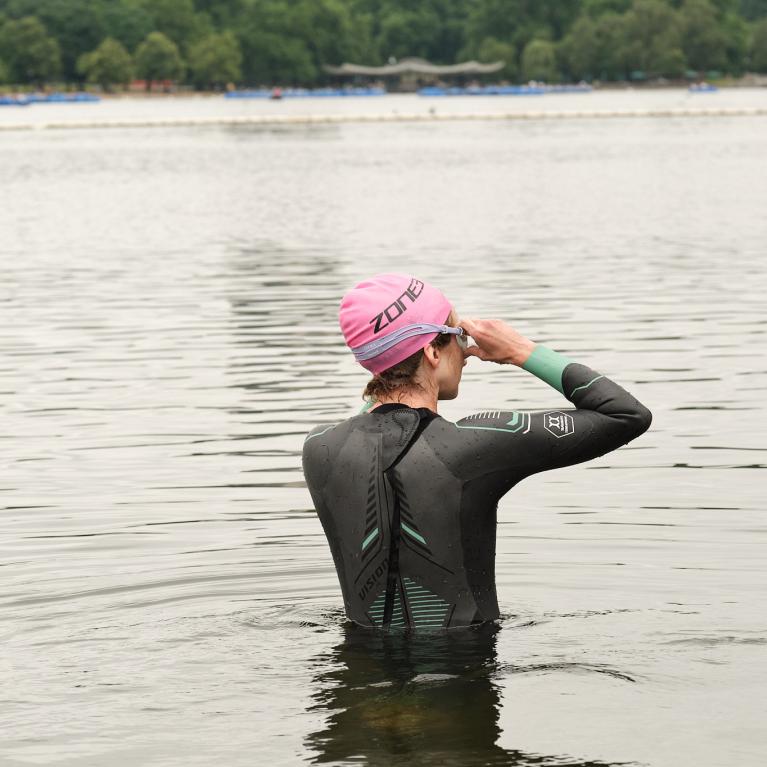
“The water temperature at Swim Serpentine can vary a lot,” says Araf Mohammed, founder of the Muslim Triathlon Network (MTN).
A seasoned participant in the event, Araf will be tackling the two-mile swim this September alongside a group of MTN swimmers.
Over the years, he’s experienced water temperatures ranging from 16°C to 18°C. “A couple of degrees might not sound like much,” he explains, “but it can make a big difference - especially for those new to open water swimming, where even shorter distances can mean spending a long time in the water at a slower pace.”
With that in mind, Araf shares his essential kit tips to help swimmers prepare for whatever conditions Swim Serpentine throws their way.
Expect to wear a wetsuit
“You will get people swimming in skins [normal swimwear],” he says, “but I’d recommend wearing a swim wetsuit for those new to open water swimming. It will keep you warm and also help you stay buoyant.”
If the water temperature drops to 15°C, Araf recommends neoprene socks and gloves, especially if you have poor circulation in your feet or hands as he does. For people who really feel the cold, a neoprene hat, which you can wear under your swim cap, will also help, he says.
Araf adds that if the water temperature is cold enough for wetsuits but the air is very warm, then it’s sensible to only put your wetsuit on halfway until just before your swim and to try and seek out some shade while you’re waiting.
Staying well hydrated on hot days is important too, though you don’t want to gulp down too much water before your swim, instead take regular sips, says Araf, as swimming with a bloated stomach can make you feel nauseous.
Check the forecast before your swim
“The week of your swim it’s important to keep checking the water temperature of the lake, as it can change dramatically from week to week due to variations in the air temperature,” says Araf. “A really hot spell will nudge the temperature up, while a cold spell or even fresher overcast weather will cause it to drop down, potentially by a couple of degrees. You can also get pockets of cold water in the lake.”
Araf suggests swimmers pack their bags imagining the coldest scenario, taking along neoprene gloves and socks, and then seeing how the water feels on the day.
He also advises swimmers to test out their wetsuit and any other accessories they may be wearing on the day in advance of their swim to get used to how they might affect their swim technique.
Enjoy it!
“There can be a lot of anxiety around open water swim events,” says Araf, “the prep, the logistics, what you need to know and wear…”, but he’s experienced first-hand, through both the MTN and his own swimming, what a confidence booster these events can be. “Swimming in open water is a real accomplishment, taking that step up from swimming in a pool, and perhaps completing a distance you never thought possible before.
“You realise these achievements are not just for the pros, they can be for anyone who puts their mind to it,” he says.
Written by Sam Haddad. Sam is a freelance journalist based in Brighton, she's been writing about sport and the outdoors for over 20 years.